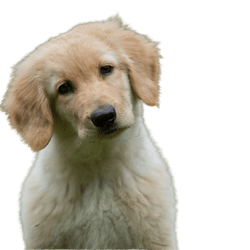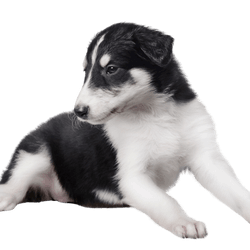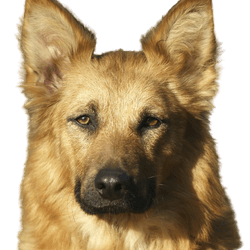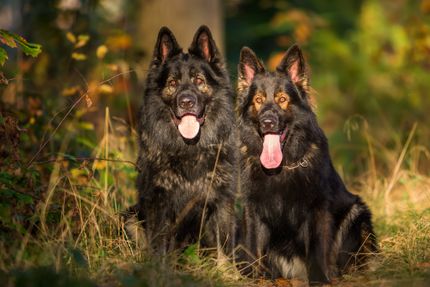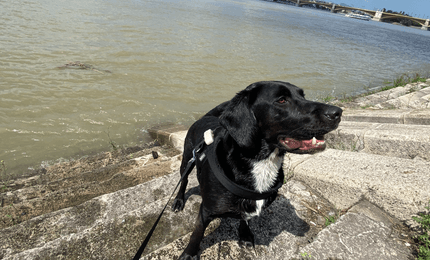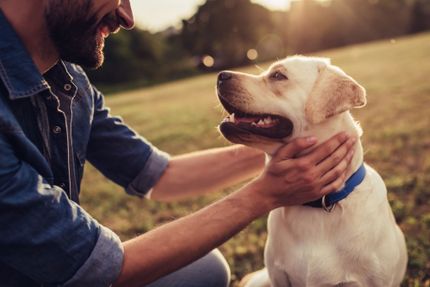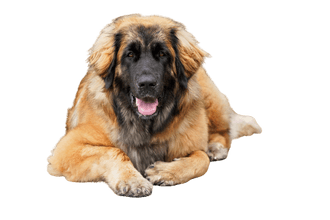
Leonberger Breed description: Character & Co
Leonberger
Facts & Origin
What is the origin of Leonberger?
The Leonberger originated in the first half of the 19th century, when the demand for large, shaggy dogs increased. One reason for this was the legendary rescue dog Barry, who, according to legend, saved the lives of 40 people from the canon's hospice on the Great St. Bernhard. With a withers height of 70 to 90 centimetres and a weight of around 50 kilograms, it was considerably lighter than today's purebred St. Bernards, which are regarded as a symbol for avalanche dogs. When the legend around Barry became known, everyone wanted to own a St. Bernard. But as there were not enough pure-bred parents, animals that looked similar to St. Bernards were also used for breeding. Also the Leonberger dog dealer Heinrich Essig, who was also a city councilor, recognised their potential. His aim was to create a dog breed that looked like a lion. Because after all, this animal was to be found on the coat of arms of Leonberg. The first Leonberger was born in 1846. Until the outbreak of the First World War, they were popular with wealthy people as guard dogs and with farmers as draught animals. But during the two world wars breeding went back drastically: Hardly anyone could afford a dog of this size, because the amount of food they need is enormous. As a result, the breed was facing extinction until enthusiasts joined forces and founded the "German Club for Leonberger Dogs" in Leonberg in 1948.
What are the breed characteristics of Leonberger?
Very typical for the Leonberger are their strong build and thick mane. The giant sometimes seems to be unaware of its size and it seems as if they would prefer to sit on your lap. Their high stimulus threshold and good nature are also breed characteristics that delight their fans. The Leonberger is also active and loves trips to the countryside with their family. If they then have the opportunity to pursue their passion as swimmers, they are absolutely content.


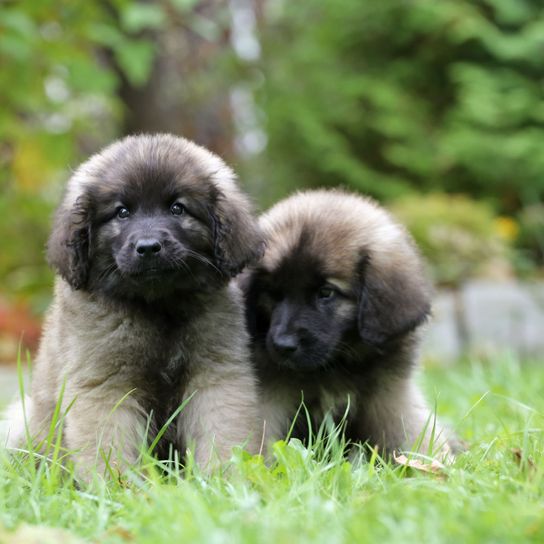
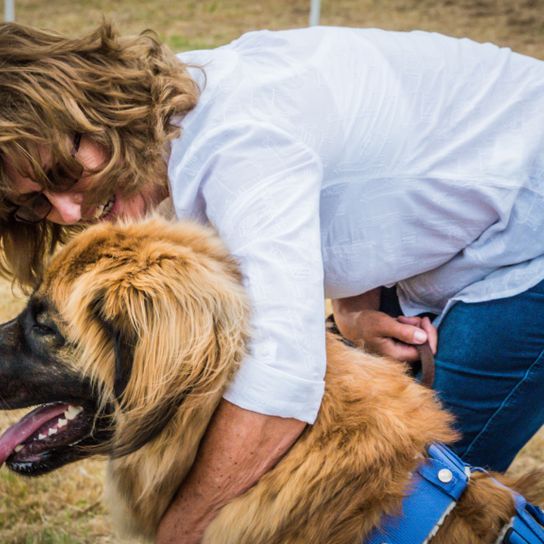
| Alternate Name | - |
| Origin | Germany |
| Life expectancy | 8 - 9 years |
| Care requirements | low-maintenance |
| Activity level | average |
| FCI group | Molossian type |
| AKC group | not recognised |
| KC group | not recognised |
Attitude, character and temperament of the breed
What are the typical character traits of the Leonberger?
Absolutely nothing seems to be able to upset the Leonberger. Even noisy children playing around doesn't bother them. On the contrary, the dog loves its little family members and puts up with a lot with its good-natured character. As a play buddy they are more suitable for older children however because of their size. Especially young dogs are very playful and can sometimes play a bit too wildly. Since the breed is willingly subordinate, training them is easy. However, you should be consistent, as they can be stubborn.
Character
Usage



Health and breeding information
What are typical Leonberger diseases?
As inbreeding was often practised in Leonberg breeding in the past, hereditary diseases occur more frequently. The high weight of the animals also contributes to the fact that their health condition may deteriorate with age. Here are some typical diseases:
- The risk of stomach torsion is more frequent in the Leonberger because of the large amounts of food they eat: after all, the animal eats up to 2 kilograms of wet food per day
- Due to their weight, they are prone to developing arthrosis
- Heart diseases are also increasingly more common
- Like all large breeds, the Leonberger is prone to suffering from hip joint dysplasia
What should be considered when breeding the Leonberger?
It is best to visit a Leonberger breeder several times before you decide on buying a puppy. A look at the parents will give you an impression of what your new family member will look like. It is best to choose a dog that is not bred to a particularly large size: especially heavy animals tend to suffer from joint diseases.


Appearance and coat of the Leonberger
With its dense collar and impressive appearance the Leonberger reminds a bit of a lion. Their fur forms a proper mane, especially on the males chest and coat. Very typical - independent of the coat colour - is the black mask on the face. Additionally, many representatives of the breed have fur with dark-coloured tips. Especially strongly feathered are the front and hind legs and the bushy tail. If you want to buy a Leonberger, you have the choice of many shades: Allowed are the colours yellow (similar to lions), red, red-brown, sand and pale yellow. According to the breed standard, small white markings on the toes or chest are allowed. Your Leonberger looks at you with gentle, oval eyes. As the Leonberger has a dense undercoat under its top coat, you should dedicate time for grooming every day. It is best to already get the little Leonberger puppy used to this procedure. This way, they will know to keep still later on when you remove dead hairs.
What is the average size of the Leonberger?
The Leonberger is one of the largest breeds of dog:
- Males grow to 72 - 80 centimetres
- bitches reach a shoulder height of up to 75 centimetres
How much does a Leonberger weigh?
A Leonberger can weigh up to 80 kilograms.
What is the average age of a Leonberger?
The Leonberger has a life expectancy of seven to nine years.
| Fur length | medium |
| Fur | flat coated |
| Ear shape | Floppy Ear |
| Tail | fanned out |
| Anatomy | hefty |
| Size ♀ | 65 - 76 cm |
| Weight ♀ | 42 - 59 kg |
| Size ♂ | 72 - 80 cm |
| Weight ♂ | 72 - 80 kg |
| Suitable For | Children |
Colors






Known Diseases
Elbow dysplasia (ED)
Elbow joint dysplasia is a chronic disease complex of the elbow joint of fast growing dog breeds.
Hip dysplasia (HD)
The hip dysplasia or hip joint dysplasia of the dog (HD) is a maldevelopment of the hip joint.
Bone Cancer
May occur with age.
FAQ
-
A Leonberger puppy costs about 2000 Euro.
-
The Leonberger needs average exercise and is very happy with 3 walks. However, he feels most comfortable when he has a garden at home where he can romp and play from time to time when he feels like it.
-
No, the Leonberger is not the largest dog breed in the world. That is the Great Dane, but Leonbergers are among the giant dog breeds.
Other large dogs
Useful Articles

You can find articles that might interest you in the dogbible blog to match your favorite breed.
Visit our magazineto stay up to date on dog trends.
To find out more, view our Privacy Policy
Find here the breed that suits you and find out what character traits it has. Here you can also learn more about the origin, size and weight of your favorite breeds.
Matching your favorite breed, you'll find articles that might interest you on the dogbible dog blog.
Vegan dog food - polarizing topic
Beef Pizzles as Bully Sticks for the dog
5 tips to master dog encounters without problems and aggression
Real Nature dog food - experience review and is it really that good?




